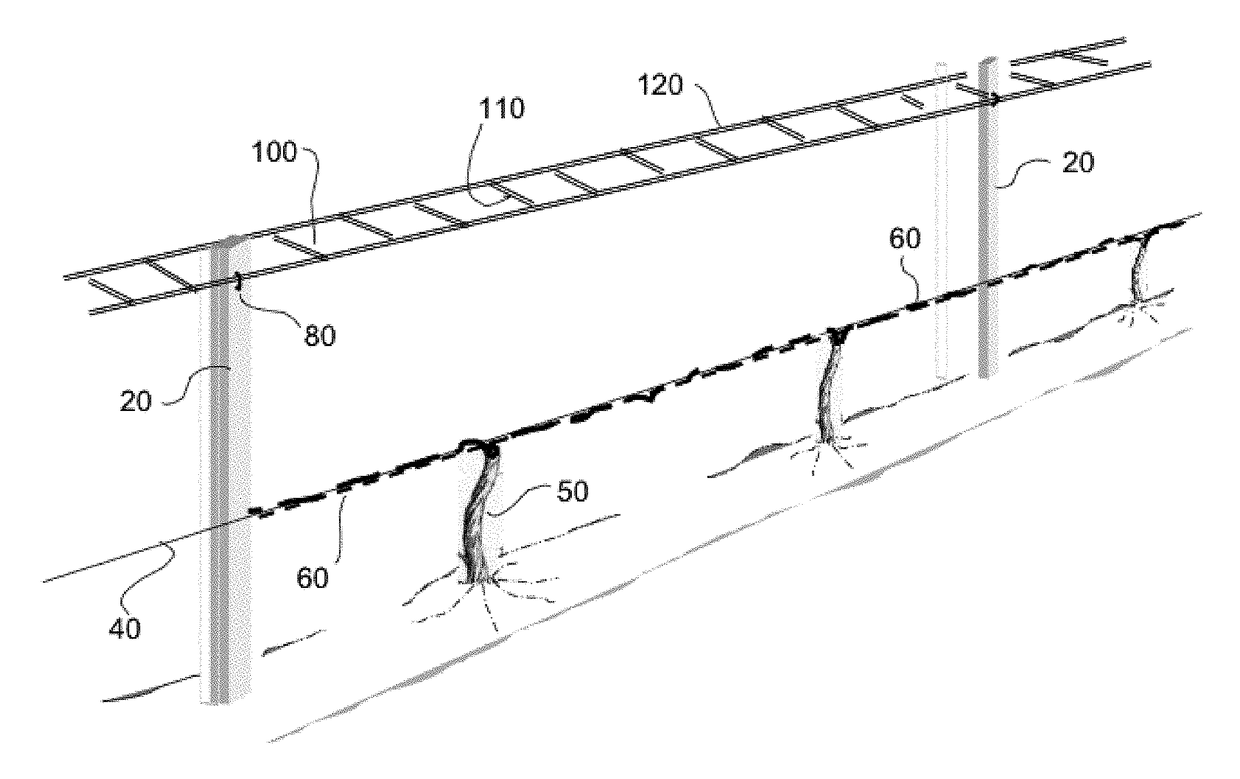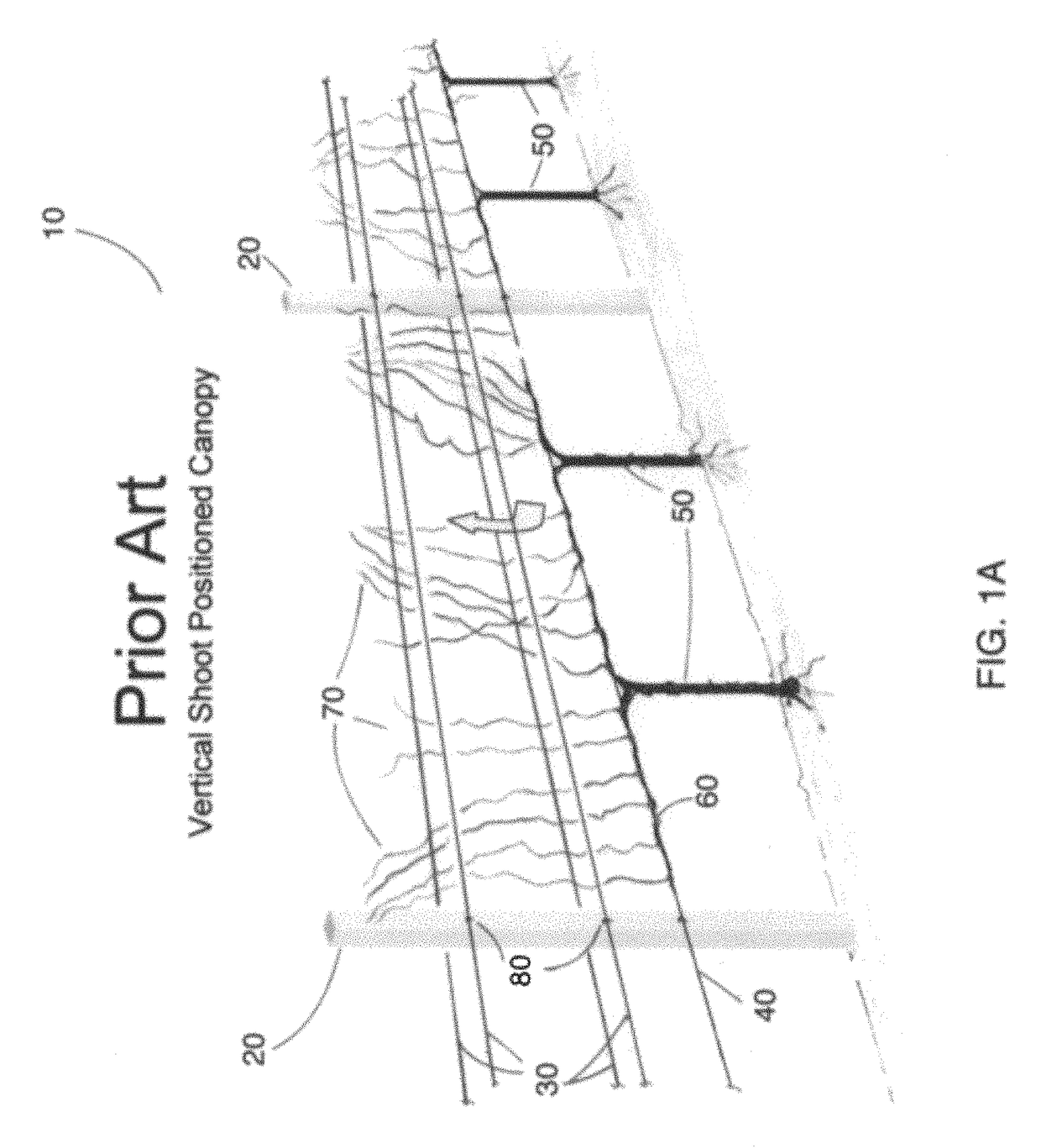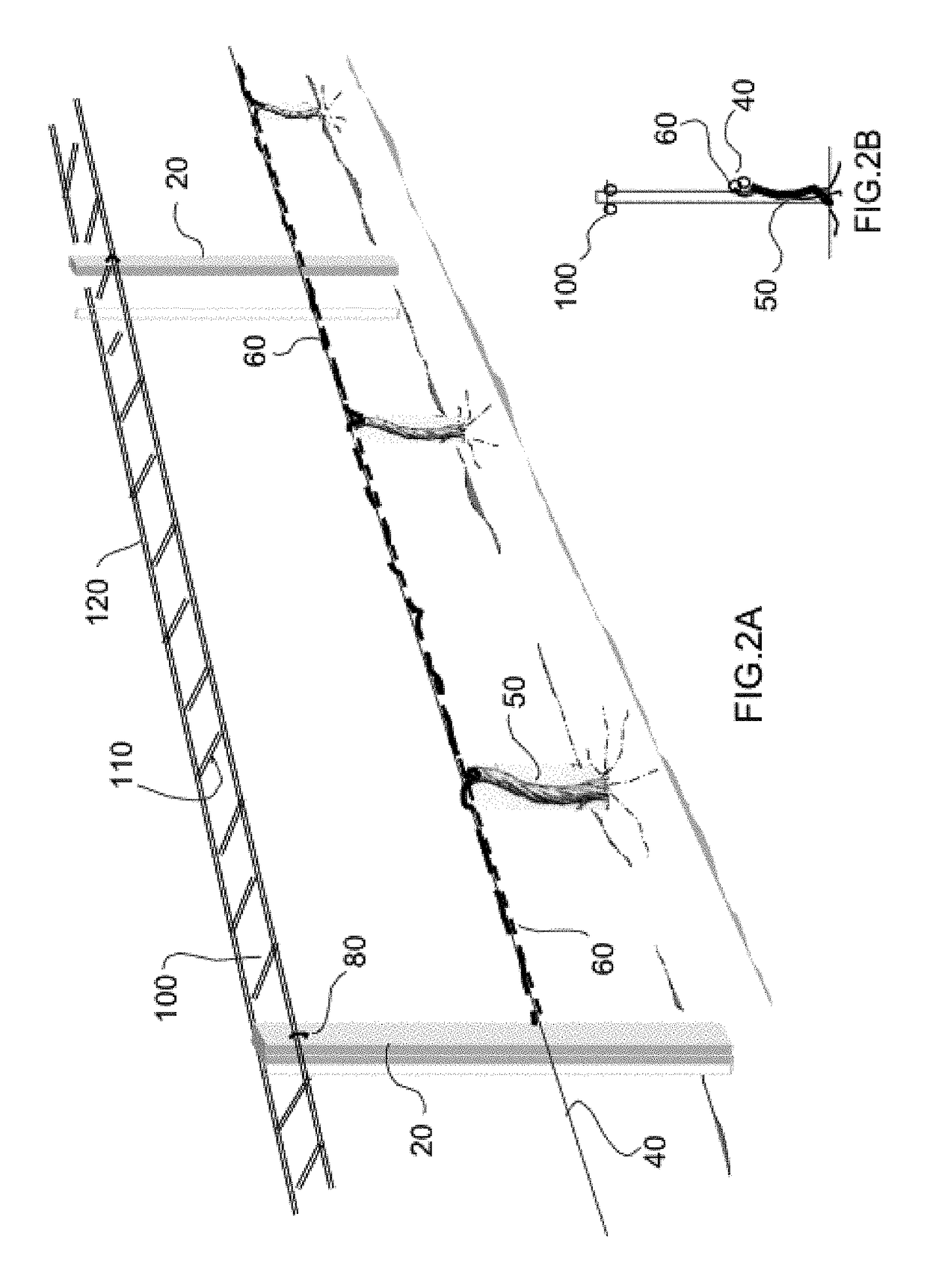Grid shoot positioning system for grape vines
a technology for grape vines and positioning systems, applied in application, cultivation equipment, agriculture, etc., can solve the problems of poor color, grape vines with higher acidity, and adverse effects of sun exposure on fruit quality, so as to achieve maximum sunlight and less labor
- Summary
- Abstract
- Description
- Claims
- Application Information
AI Technical Summary
Benefits of technology
Problems solved by technology
Method used
Image
Examples
first embodiment
[0153]the VLSP system will now be described and includes references to FIGS. 2A through 7B, which are arranged sequentially to correspond with the natural progression of the growing season. This embodiment illustrates how the concept of VLSP works in the context of vertical positioning of grape vine shoots, and the timing of the various operations.
[0154]FIG. 2A illustrates the dormant vine stage, after pruning. In this figure a perspective view of a portion of a trellis 10 is shown. The vines 50 have been pruned to the desired number of buds and the cordons or canes 60 have been secured to the fruiting wire 40 in much the same way as conventional viticulture. Compared to the prior art, in this embodiment no catch wires are required but are replaced by a single shoot positioning grid 100. In this example, the grid continues along the entire length of the vine row. In this stage of growth the grid had been positioned near the top of the posts prior to the previous winters pruning.
[015...
second embodiment
[0195]A second embodiment can be used for any downward growing training system, such as the High Cordon (also known as High single curtain or High Bi-Lateral Cordon) training system, shown in FIGS. 11A and B. The High Cordon system trains a single or double curtain of downward growing shoots 70 arising from two cordons or canes 60 extending along a top wire 40 of the trellis in each direction, the ends of which approach the ends of the cordons from neighboring vines. The shoots are trained downward.
[0196]In this case, the grid 100 is initially placed close to the cordon or cane and high fruiting wire prior to spring growth as shown in FIGS. 11A and B. The shoots initially grow upward, and as they grow, they are carefully redirected in a downward direction by moving the grid into the position shown in FIG. 11B. Hence from this point on, the system works the same as for upward growing vertical shoots, but the grid is moved in the opposite direction. Thus the second embodiment provides...
third embodiment
[0199]A third embodiment addresses horizontally trained vines and shoots. In this case the grid is oriented in a more vertical position, and the grid is adjusted horizontally as the vine or vine shoots grow. The ends of the grid, or extensions of the grid, may be slid horizontally along a wire or pole, or reattached at different points along a wire or pole, or otherwise suspended above the ground. The grid and vines or shoots may be close to the ground to enable heavy fruit to rest on the ground, or may be considerably above the ground to allow for, for instance, ventilation or protection from animals. It would be very appropriate for the three dimensional version of the grid to be used in this application. For example, three grids, coupled together by very flexible lines, are be placed in close contact with each other at the beginning of the growing season, and the vines or shoots allowed to grow into nearby openings in the grid, or gently placed there by hand. As the vine or shoot...
PUM
 Login to View More
Login to View More Abstract
Description
Claims
Application Information
 Login to View More
Login to View More - R&D
- Intellectual Property
- Life Sciences
- Materials
- Tech Scout
- Unparalleled Data Quality
- Higher Quality Content
- 60% Fewer Hallucinations
Browse by: Latest US Patents, China's latest patents, Technical Efficacy Thesaurus, Application Domain, Technology Topic, Popular Technical Reports.
© 2025 PatSnap. All rights reserved.Legal|Privacy policy|Modern Slavery Act Transparency Statement|Sitemap|About US| Contact US: help@patsnap.com



